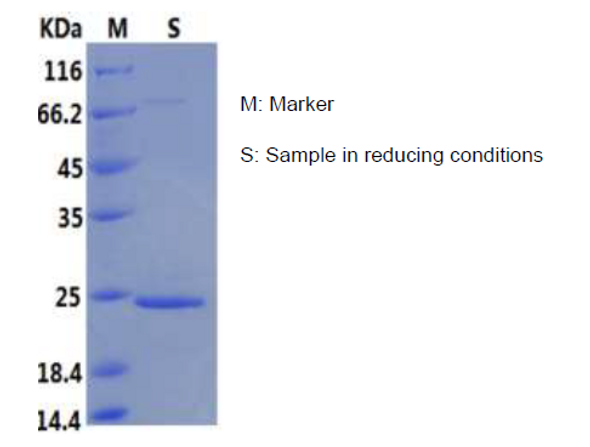Recombinant Human Oncostatin M/OSM Protein (His Tag)(Active) | PKSH033574
- SKU:
- 575-PKSH033574
- Weight:
- 1.00 KGS
Description
Recombinant Human Oncostatin M/OSM Protein (His Tag)(Active) | PKSH033574 | Gentaur US, UK & Europe Disrtribition
Synonyms: Oncostatin-M; OSM
Active Protein: Active protein
Activity: Recombinant Human Oncostatin M is produced by our E.coli expression system and the target gene encoding Ala26-Arg221 is expressed with a 6His tag at the N-terminus .
Protein Construction: Recombinant Human Oncostatin M is produced by our E.coli expression system and the target gene encoding Ala26-Arg221 is expressed with a 6His tag at the N-terminus .
Fusion Tag: N-His
Species: Human
Expressed Host: E.coli
Shipping: This product is provided as lyophilized powder which is shipped with ice packs.
Purity: > 95 % as determined by reducing SDS-PAGE.
Endotoxin: < 1.0 EU per μg as determined by the LAL method.
Stability and Storage: Generally, lyophilized proteins are stable for up to 12 months when stored at -20 to -80℃. Reconstituted protein solution can be stored at 4-8℃ for 2-7 days. Aliquots of reconstituted samples are stable at < -20℃ for 3 months.
Molecular Mass: 24.44 kDa
Formulation: Lyophilized from a 0.2 μm filtered solution of 20mM Tris-HCl, 1mM EDTA, 200mM NaCl, pH 7.5.
Reconstitution: Please refer to the printed manual for detailed information.
Background: Oncostatin M (OSM) is a glycoprotein belonging to the interleukin-6 family of cytokines that includes leukemia-inhibitory factor, granulocyte colony-stimulating factor, and interleukin 6. OSM encodes a growth regulator, which Inhibits the proliferation of a number of tumor cell lines. It stimulates proliferation of AIDS-KS cells. OSM regulates cytokine production, including IL-6, G-CSF and GM-CSF from endothelial cells. OSM is considered as a pleiotropic cytokine that initiates its biological activities through specific cell surface receptors. The low affinity LIF receptor that shares the similarity of containing protein gp130 has now been identified to be a component of a high- affinity OSM receptor that will transduce OSM signals. OSM has also been shown to play a role in both pro and anti-inflammatory actions. OSM may also be involved in many biometabolism processes including liver development, haematopoeisis, inflammation, bone formation and destruction and possibly CNS development.
Research Area: Cardiovascular, immunology








